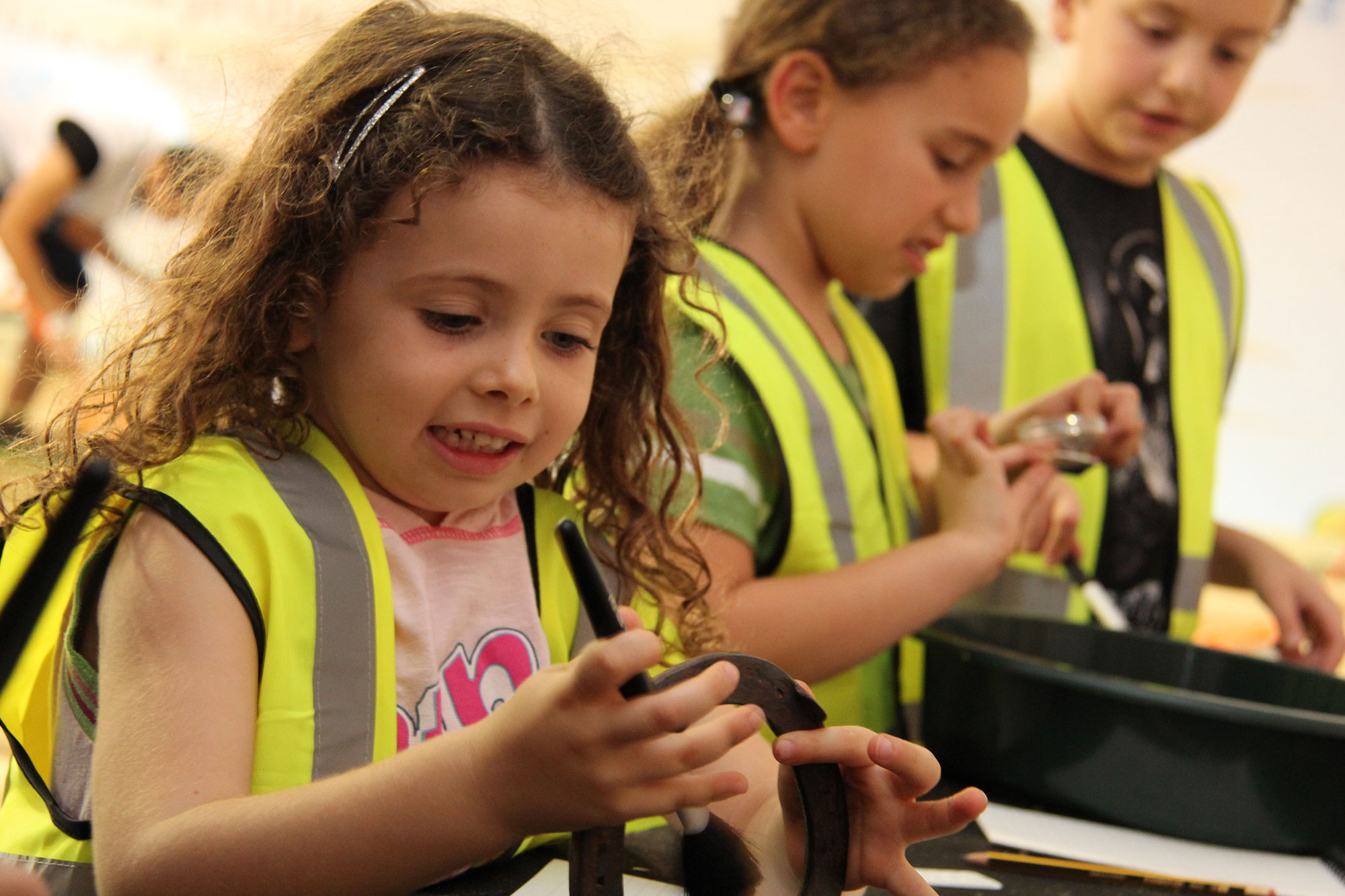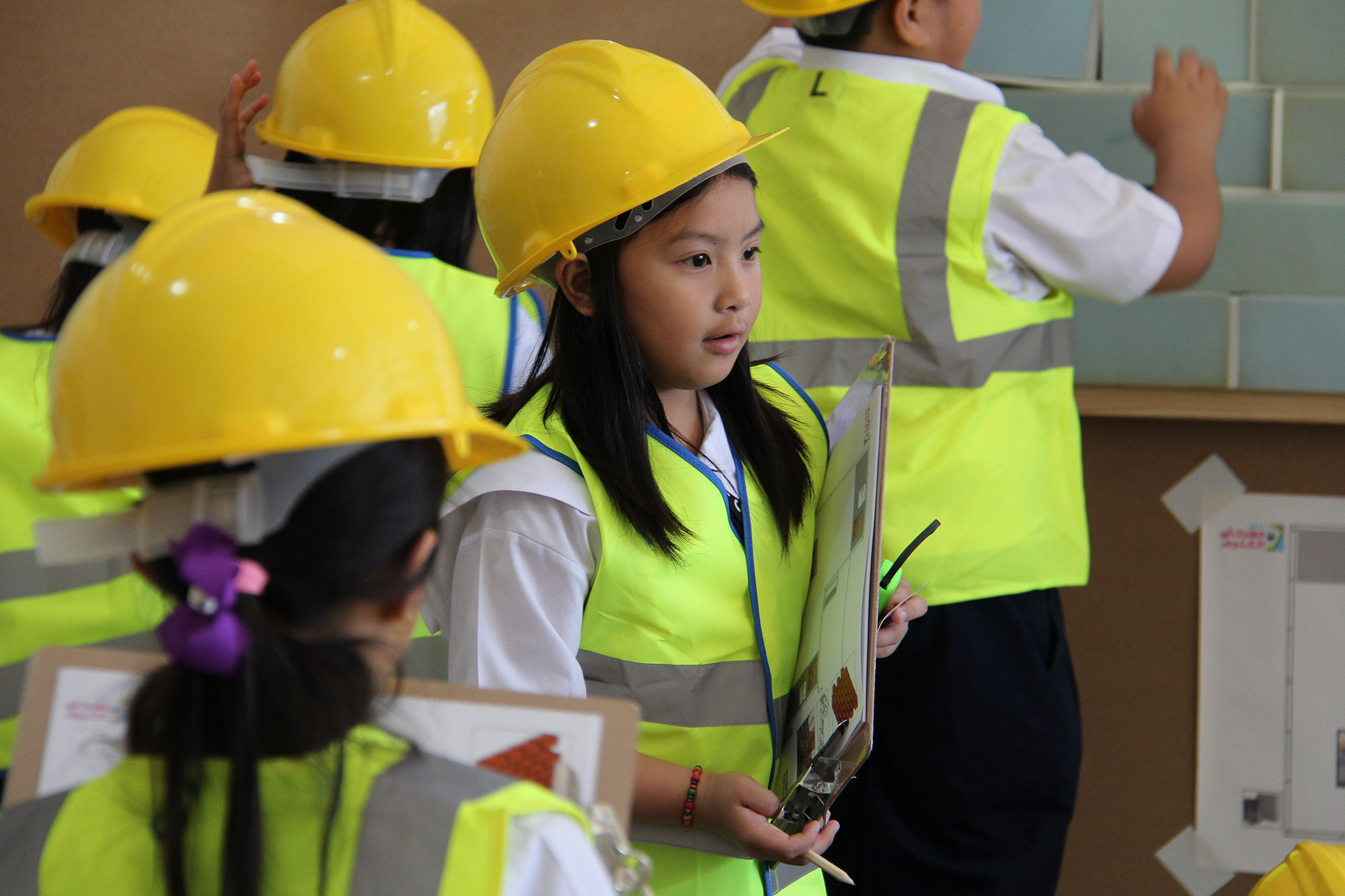
The Early Start Discovery Space is Australia’s only ‘children’s museum’ for children from birth to 10 years old, promoting learning through play (#learningthroughplay) and the importance of life-long learning. It is located on the campus of the University of Wollongong as part of the Early Start initiative.
Our CEO, Adam Selinger was responsible for creating the entire visitor experience within the Discovery Space. From our decade-long experience of creating engaging, accessible and educational experiences we created the initial suite of immersive experiences; including Tummy Tour where you learn about digestion and healthy choices, Shipyard where you journey with the tall ship / Antarctic explorer HMAS Discovery, Construction Site where you become brickies, tilers, roofers, plumbers and floorers to complete a house and The Dig where you unearth artefacts or ancient animals in a replica excavation site.
The CDM team consults with many organisations to bring their style of joyful creative learning to communities around the world.
Adam speaks at the seminar: The Co-design of Educational Spaces
Visit the Early Start Discovery Space website.
See what 18,000 + visitors think about the Early Start Discovery Space.
Read the 2020 research paper evaluating the Early Start Discovery Space.
Discovery Space Experiences
Children's Discovery has developed an extensive range of specialty expertise in the design, development and production of interactive, educational experiences. Many of these can be found in permanent facilities, such as the Early Start Discovery Space in Wollongong, Australia. Others appear at festivals and events around the world.
Kids Dig
Immerse yourself in an archaeological (and sometime paleontological) experience

Kids Dig is a simulated archaeological dig experience where visitors assume the role of scientist, archaeologist or other investigative specialty. Prior to entry onto the site, participants are given an induction about working safety on site and how to work systematically in carefully excavating objects (finds) from the site.
Authentic tools and equipment are available for each participant to excavate and retrieve objects. They then move to the ‘ID Tent’ to investigate their finds and make more detailed records (measurements and other key characteristics) of their objects on the Finds Records Sheets and making reference to the on-site field notes and museum.
The group will come together for a final review, describing some of their finds. We propose some hypotheses about human habitation of the site based on the evidence found and recorded.
A variety of 'back-stories' can be created for the site, and artefacts selected to reflect the possibility of an ancient people, place or activity. From pre-historic foundries to early settlements, we taylor Kids Dig to the interests of the venue.
NEW: Kids Dino Dig is our paleontological experinece - same idea, but with GIANT BONES and a gantry crane to move them!
Learning outcomes:
- Archaeology is a science involving the systematic collection, classification, testing and comparing materials as evidence for past human activity, culture and history.
- Human ingenuity is not a new phenomenon; there is evidence of great science and technologies going back 5000 years and longer.
- Modern scientific techniques help us understand the past as well as providing solutions to current and future needs.
Examples of Kids Dig in action
KidsFest, Shellharbour, New South Wales, Australia
Sasol Scifest, Grahamstown, South Africa
Abu Dhabi Science Festival
Qasr Al Hosn Festival, Abu Dhabi
Build It
Design and construction come together in this house construction experience

Build It is a simulated house construction experience where participants assume the role of architect, interior designer, brick layer, plumber, paver and other professions and trades involved in house construction. Entering via the site office where site safety induction occurs; all participants don safety vest, hard hats and grab their tools before getting to work.
Participants can make use of the Architects and Interior Design workstations – explore alternative house plans and design elements with magnetic vinyl cutouts of walls, floors, plumbing, fixtures and fittings applied to the floor plan. This can also be replicated electronically with Tablets.
Learning outcomes:
- House construction relies on a number of STEM-related professions and trades.
- Architects rely on physical science and engineering to ensure houses are safe and provide long-term shelter.
- Designers rely on their understanding of human psychology and materials.
- Specific trades need STEM knowledge; bricklayers understand forces and plumbers know about fluid dynamics.
HMAS Discovery
Join a journey of discovery onboard an ever-changing ship
First staged at The Rocks in Sydney in 2009, HMAS Discovery emulated the early 19th Century journeys of exploration to the New Worlds. HMAS Discovery was later shipped to a new home in Western Australia. HMAS Discovery (2) was recreated at the Early Start Discovery Space where it continues to transform from an early exploration vessel, Antarctic explorer, with perhaps more iterations to come.
Tour of the Tummy
Become fully 'injested' in our immersive tour of the intestines 
The tummy tour started swallowing visitors in 2005 as part of the Australian Science Festival in Canberra. It featured at the Ultimo Science Festival in Sydney in 2008 and 2009 and has continued to engulf visitors at the Early Start Discovery Space in Wollongong - belching since 2015!


 Kids Dig is a simulated archaeological dig experience where visitors assume the role of scientist, archaeologist or other investigative specialty. Prior to entry onto the site, participants are given an induction about working safety on site and how to work systematically in carefully excavating objects (finds) from the site.
Kids Dig is a simulated archaeological dig experience where visitors assume the role of scientist, archaeologist or other investigative specialty. Prior to entry onto the site, participants are given an induction about working safety on site and how to work systematically in carefully excavating objects (finds) from the site.



